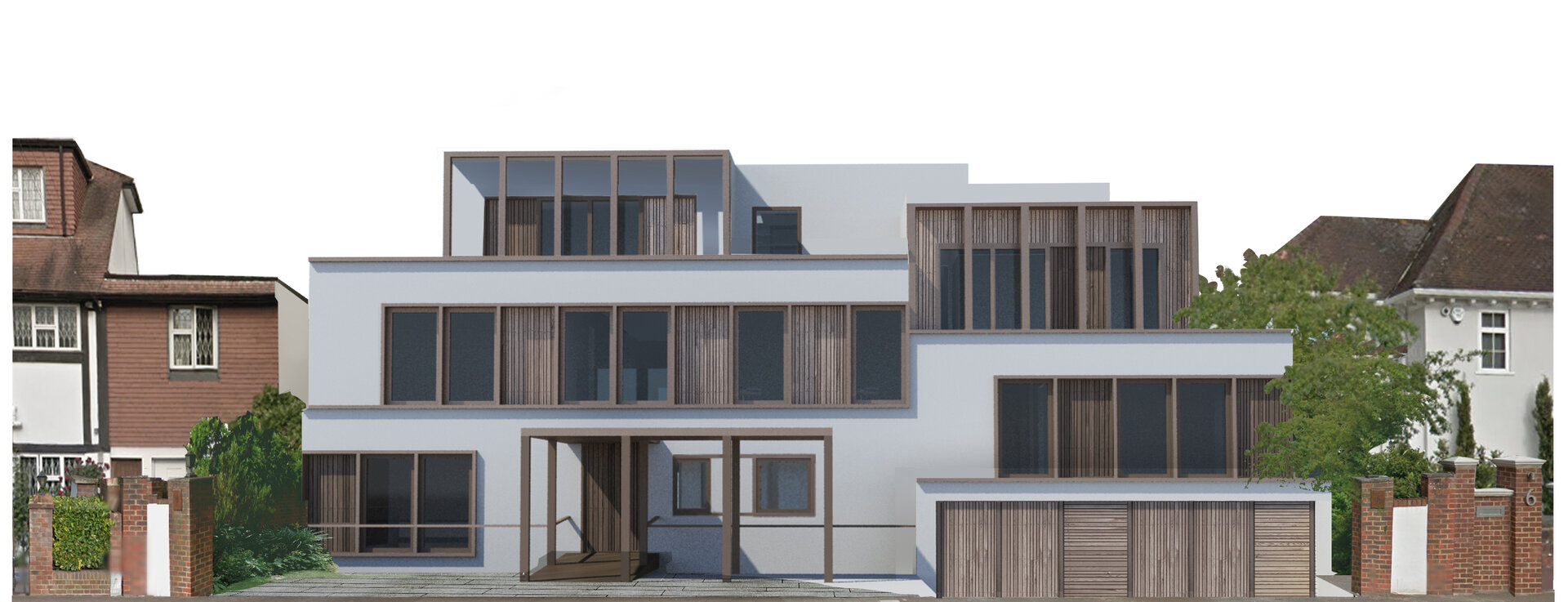Householder Permitted Development Rights
Householder Permitted Development Rights
If you own or are looking to develop a property in West London, there is scope to create significant enlargements without the need to submit a formal planning application for approval by the Local Planning Auhority. The permitted development guidance continually changes but, last year, the Government introduced a temporary half-way measure under the prior notification and approval process which increases the scope for permitted development. This blog/note prodvides a summary of what is permitted development and how the prior notification process may be able to help you deliver your project.
What is permitted?
The following advice references The Town and Country Planning (General Permitted Development) Order 2015 and its series of amendments and the Permitted development for householders Technical Guidance (published April 2014).
Extensions
The Town and Country Planning (General Permitted Development) Order 2015 and its series of amendments allows for side and rear extensions of one-storey provided the enlargement:
- does not extend beyond the rear wall of the original dwelling house by more than four metres for a detached dwelling and three metres for an attached dwelling.
- the enlarged part of the dwelling would not extend beyond a wall forming a side elevation of the original dwelling.
- have a width greater than half the width of the original dwelling.
- the height of the extension is less than four metres or three metres to the eaves if within two metres of a boundary.
There are a number of points of interpretation including:
- What is happens when you have an L-shaped wrap around extension?
- How do you define the original property and the rear wall?
- At what point at ground level do you define the height?
- When does an extension become an outbuilding?
- When does a roof addition become a normal extension?
If your proposals are complex or you are looking to maximise the use of Permitted Development Rights it is best to call or email WEA Planning for advice.
Outbuildings
There is wide scope within the plot to build outbuildings including swimming pools (providing they don't require substantial excavation), art studios and home offices. As long as the buildings are one storey and built within the height limits there is no limit to the coverage of buildings on the plot being in of 50% the total area of land around the original house.
The use must be 'incidental' to the enjoyment of the dwelling house and not be considered a different use such as a separate dwelling, art gallery open to the public, office with a number of external employees etc.
Dormer roof extensions
A dormer roof extension to the rear of a dwelling will be considered permitted development provided it would:
- a) not exceed the height of the highest part of the existing roof;
- b) the cubic content of the resulting roof space would not exceed 50 m3 for detached dwellings and 40 m3 for semi-detached and terraced properties;
- not include a balcony, veranda or raised platform;
- form part of the chimney or flue proposals; and
- the edge of the enlargement, so far as practicable, is not less than 20 centimetres from the eaves of the original roof.
Materials
The recurring theme in the regulations is that the materials used in any exterior work shall be of a 'similar appearance' to those used in the construction of the exterior of the existing dwelling house. The definition of similar appearance is open to interpretation so it important to consider the local context and to demonstrate why the materials are similar in appearance.
The different West London boroughs vary in their interpretation, so it is important to consider who you are applying to. WEA specialise in dealing with permitted development rights and full planning applications in 10 major boroughs across West London, so please contact us if you would like further help or advice.
Prior Notification / Approval
Until the 30th May 2019 (development to be completed by this date), extensions can be extended by more than six to eight metres beyond the rear wall of the original dwelling house potentially without requiring planning approval. The applicant needs to notify the planning authority of the proposals and submit a list of addresses for the adjoining properties. The Local Authority can only refuse the initial application on the following grounds:
- a) the proposed development is not essentially permitted development (beyond six to eight metres, over four metres in height, wraparound etc);
- b) the applicant has not provided enough information for the authority to sufficiently decide whether or not the development is compliant;
Provided the Local Authority do not refuse the initial application and the adjoining properties do not respond after 21 days, there is no requirement for prior approval from the authority. If the local authority receives one objection from a neighbour then the applicant must seek prior approval. The local authority has 42 days from the date of the application to determine the application and can refuse the application on amenity grounds. If the applicant has not heard from the local authority after 42 days, again, it can be assumed development can proceed. If your prior notification planning application is turned down, the refusal by the local planning authority can be appealed.
Authorising the Permitted Development
With the exception of the new prior notification regulations, there is no requirement for a householder to submit a application to the Local Authority to reguarlarise the permitted development. However, it is good practice to submit a Lawful Development Certificate to certify that the development can either go ahead or what has already been built does not require planning permission. This will help with your property particulars and with any loans that may be required to undertake the works.
Community Infrastructure Levy and Householder Permitted Development Rights
All residential extensions with net additional floorspace of over 100 sqm Gross Internal Area are liable for the Community Infrastructure Levy even if they are considered permitted development. However, many householders will qualify for self-build extension relief which will negate any potential charge. The onus is on the applicant to the relevant forms at the right time or they could be potentially liable for the full charge.
Restrictions to Permitted Development
The permitted development rights do not apply for works to non listed buildings, non dwelling houses and land which have been designated under Article 4 direction..
Further information and Advice
Permitted development and the prior notification process can be confusing and, if not followed correctly, can lead to enforcement by the Local Authority and/or costly rectification. If you are unsure about your project, please call or email WEA Planning.

